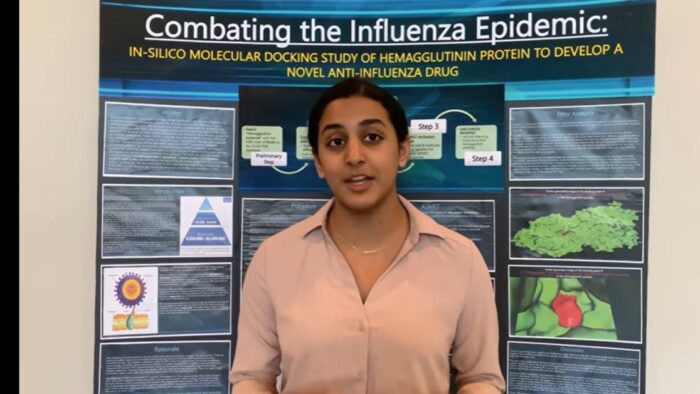Anika Chebrolu, a young Indian American is making waves, by not just winning the 3M Science Challenge but also by potentially beating top corporations for a breakthrough cure for the Covid virus. Not far behind were many Indians her age who made it to the finals of the competition showing a near dominance by Indians in the field of Science at a very young age.
Ever since the pandemic broke out, scientists across the globe are working in a frenzy to understand the virus and ways to control it. We have already heard numerous claims about the identification of a vaccine, yet none have proved to be efficacious. In this mad race between scientists, children have also decided to take part and offer their valuable service to the research on COVID-19. In this year’s 3M Young Scientist Challenge, Indian-American, Anika Chebrolu seized the winner’s title. The 3M Young Scientist Challenge is an annual science and engineering competition where children between Grade 5 and 8 record a short video that expresses a solution to an everyday problem. Anika is a grade 8 student from Frisco, Texas who made exceptional use of technology and gave rise to a possible solution to be rid of the virus. Having employed the in-silico methodology, which means to use computer simulations, she has designed a drug that can bind to the spike protein of the virus and impair its function.
Anika's experience: https://youtu.be/9jme1Nqsv0Y
It is a colossal task to develop an antiviral drug since a virus unlike other microorganisms resides inside a cell. A virus is underdeveloped and absolutely non-functional when it is present outside the body. It requires a living cell to provide the necessary nutrition and factors to fully develop into a functional and virulent virus. The virus exploits the cell to make its own machinery. To develop an antiviral drug, one needs to make sure the cell is left undamaged.
Anika had begun working on her research even before the pandemic hit the world. She was actually working on the 1918 Spanish Flu pandemic that took many lives. She realised that even with the variety of antivirals and vaccines in the market, the number of infections and deaths have been rising. When the COVID pandemic hit, she decided to shift her focus to this new member of the coronavirus family. She has been extensively studying the virus and its mode of action, which led her to this novel approach.
Award Winning entry: https://youtu.be/fziWyFUO2dw
The virus is surrounded by spikes that are nothing but proteins. The viral genome codes for these protein spikes, which help to invade the host membrane and in the development of the virus. Anika’s emphasis laid on finding a ligand or a compound that can bind to a specific spike protein, Hemagglutinin, which is responsible for facilitating the virus to enter the cell. This protein can thus make an excellent and potential target to nip the infection in the initial stage. She obtained this protein from the online protein data bank and used computational tools to screen favourable positions on the protein that have a high binding affinity. Out of 698 million potential drug-like molecules, she narrowed it down to one potential drug candidate that had an excellent binding affinity and can selectively target the protein and impair its ability to enter the human cell.
Currently, researchers have been analysing old drugs in-silico that can be put to use with regard to the COVID-19 virus, until a vaccine or a novel drug is developed. A drug or a vaccine is the need of the hour and Anika wishes to put her novel discovery to action in the labs with the help of a 3M scientist who will mentor her studies, both in-vitro and in-vivo Inspired by her grandfather, who was chemical engineer, Anika wishes to be a scientist and a professor.
Samvrit Rao: https://youtu.be/L34m1g87uo4
Out of the many candidates who took part in this year’s competition, 26 Indian-Americans bagged the state-merit award. Of the top ten finalists, 7 were Indian-Americans who worked on various projects such as easy detection of diseased crop, development of devices that can be used to understand the interaction between cancer and bacteria, providing low cost solutions to air pollution, and many more interesting and novel projects. It is terrific to witness children make significant strides in various fields to offer their aid to mankind and nature. With Anika’s brilliant discovery, there is newfound hope to go back to our normal lives.




